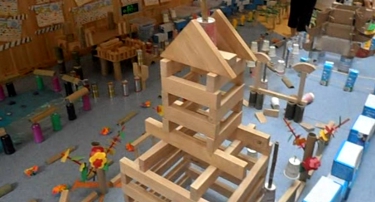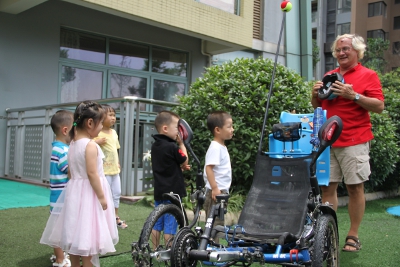Goodbye Chengdu
I often have asked myself why I lived in China and worked there so long in such an ‘alien’ environment. I am not referring to China’s culture as being ‘alien’ in comparison to my own cultural background and heritage but instead I am pointing to the ‘alien’ urban sprawl of a large city slowly consuming and transforming the surrounding natural environment into a virtual reality or artifice.
Chengdu was once a place more beautiful with balance and harmony among its natural elements. There are still glimpses of this beautiful past in scattered neighborhoods, parks and amongst the city’s green belts where one can still see farms, villages and old towns. They are constant reminders of what once was.
It is not that I don’t understand the rationale and economic motivation behind the city’s development projects. The architects, city planners, and others involved in the perpetuation of urbanization worship the so-called ‘modernization’ of China. However, I wonder at the ‘hidden costs’ of such a program and can say I never came to appreciate modern Chengdu or love it. The beauty of the Himalaya and its rural environments impressed me long before I came to China. The only times I truly felt at home in China were during those all too rare glimpses of western Sichuan’s mountains and Taoist holy shrines. Chengdu’s towering man-made structures are but mere comical attempts by an engineer to reproduce nature’s even more impressive monuments to the power of creation.
On the other hand, to give those living in Chengdu their due respect, most of the city’s parks are an appealing place to spend time in and are very nice when the weather is being cooperative. Unfortunately, that is not much of the time and when urban transport seems more important to the developers of the city’s landscape than breathing clean air, everyone should realize something is amiss in the planners’ offices. The latest construction of an elevated second ring road all around the city was the final straw in my estimation. I recently visited Hong Kong and got a preview of Chengdu’s future — one that is devoted to the God of the metal chariot we identify as an automobile. I don’t think even Chengdu’s further construction of paved areas will be able to keep pace with the demand for the supply of more and more cars. People are becoming cyborgs and don’t even know it!
Chengdu’s construction was always on my mind. The kindergarten where I worked was the ‘center piece’ of the neighborhood called Jade City. It has five sections or blocks of apartment buildings — both small and large. When I first arrived at the school with the Chinese New Year in 2009 the vacant lot behind the school compound had been taken over for construction of Jade City No. 5 complex and by the time I left the school with the Chinese New Year in 2013 it was complete, landscaped, and housed a large number of my students.
The only pieces remaining to be built in the Jade City complex are the two shopping areas on both sides of the school. So, for the last four years, our school compound was never free of the sounds of Chinese construction workers hammering, digging, or tamping down newly laid concrete floors with those infernal ‘jack hammer’ sounding devices they use.
The construction on the exterior of our compound was reflected each day by our students within the kindergarten. Each classroom has a series of plastic bins in the hall containing a strange assortment of wooden blocks and other odds and ends that the students use to design their own miniature city complexes on the floor. They come complete with buildings, roads, and parks — I guess they are beginning their civil engineering education at an early age!
Students imitate their peers and closely follow the antics of the adults they accept as role models and teachers. I guess some of my preference for the rural life might have ‘rubbed off’ on them. I always preferred to ride cycles around Chengdu. Here is where Chengdu’s city planners actually outshine all other international cities and towns with the possible exception of the Dutch. Chengdu is a cycle friendly place and there are bike lanes everywhere. In spite of the increasing traffic and road congestion, millions of cyclists zoom around each day — whether on human powered or electric driven cycles and bikes.
I was the proud owner of the only two recumbent tricycles that I ever saw in the city. It created a lot of scenes where I was the center of pedestrians’ and drivers’ attention — most people didn’t quite know what to make of me. Was that foreigner riding a cycle because of his old age or a physical handicap? People just couldn’t wrap their heads around the idea that riding one might actually be a bit of ‘fun’ and an easier way to get around the city. In fact, when traffic was at its worse during the rush hour, I could make better time than local public transport. Only the Chengdu Metro underground can compete with me for speed and ease of movement. My school finally caught on to the idea — at least it was good for advertising and I had a story written about me in the local school magazine. I was the ‘cycling teacher’ and in honor of this, the school had a small bicycle track built around the compound. It circles the school and comes complete with zebra crossings and ten miniature cycles with helmets for my students to ride. I and my older students had a lot of fun riding on the larger cycle tracks around the green belt — in particular, the Lohas green belt is nice and I’ve written about it before on this blog.
I must admit that I may actually miss some of Chengdu’s modern shopping malls. It is not that I ever went to any of them for the ease and convenience of shopping itself. There were always cheaper places to actually buy goods at — I liked Decathlon and bought most of what I purchased in Chengdu from there, including: clothes, cycles, camping and sports gear, etc. No, it was just to eat out or hang out that one goes to shopping malls for. Where else can you find dozens of restaurants and all kinds of foods under one roof? Malls can become community centers — especially if they have built-in indoor ice-skating rinks, for example, or stores where kids can play with toys for free for hours. I lived across the street from the Wanda Shopping Mall on the second ring road for a year and spent a lot of time there.
They usually had live bands and other activities on the sidewalks around the mall on weekends and even in-line roller skating for kids. I did frequent McDonalds too often but where else can you get a fresh cup of coffee in the middle of the night while surfing the internet cafe nearby? The last mall in Chengdu I visited was called the Mix C — I don’t know why — but they had an American “Toys ‘R Us” shop and as a kindergarten teacher I just had to go there! The giant mushrooms in the entrance foyer were a reminder of the kind of ‘recreation’ I am in search of as I turn my sights to ‘higher’ goals amongst the Himalaya. So, Chengdu, thank you for all the memories — both good and bad — they are all meaningful and have enriched my experience of life.
March 10, 2013 (from Kathmandu)
Filed under: China and






